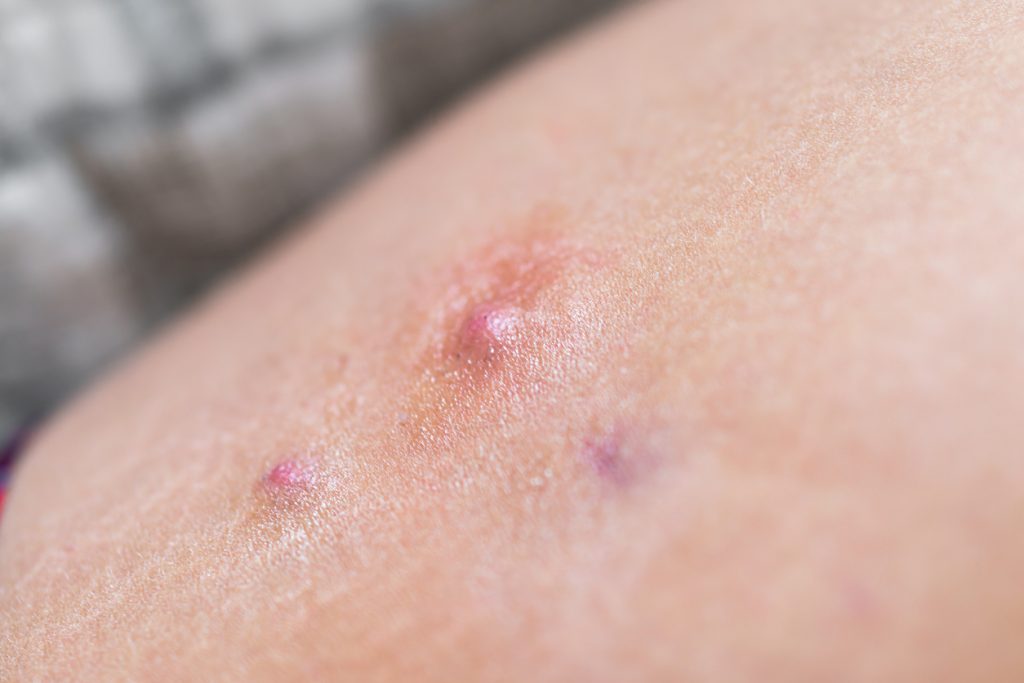
Hidradenitis Suppurativa: Causes, symptoms and treatments
Hidradenitis suppurativa causes skin lesions that are inflamed (swollen), recurrent (reappear once they’ve disappeared) and chronic (last a long time). The disease affects at least 1% of the adult population.
What is hidradenitis suppurativa?
Hidradenitis: Inflammation of hair follicles or sweat ducts.
Suppurative: Formation of pus.
Hidradenitis suppurativa is considered a skin (cutaneous) disease (dermatology) that can have physical and psychological repercussions. The pain caused by the lesions and the affected areas (underarms) of your skin can limit your movements and your ability to perform certain daily tasks.
Because of the areas of the body it affects and the unsightly, smelly, uncomfortable or painful manifestations it can cause, hidradenitis suppurativa can also lead to negative feelings such as embarrassment, stress and low morale.
Hidradenitis suppurativa nodules are usually found in areas of the skin with special sweat glands called apocrine sweat glands. These glands are found in hairy areas of the body, such as the armpits, groin and genital region.
Definition of hidradenitis suppurativa
Since hidradenitis suppurativa is thought to be a disease of the hair follicles, nodules associated with the disease are particularly likely to appear in very hairy areas of the body. They also form where there are folds or rubbing of the skin, e.g. under the breasts, on the buttocks and/or inner thighs.
Signs and symptoms
Depending on the severity of hidradenitis suppurativa, you may experience some of the following signs and symptoms.
Common signs of the disease
- Comedones: often appear in pairs on bumpy skin;
- Abscesses: red, tender bumps that enlarge and burst, may cause pain or a burning sensation, and contain pus. They can create an unpleasant odor when they burst and release pus;
- Nodules: hard lumps under the skin that can persist for years. They can enlarge and cause pain and swelling;
- Fistulas and fistula tracts: open wounds. If they heal, they do so very slowly. In many cases, tunnels (fistulae, also known as sinuses) are formed, allowing the lumps to communicate under the skin;
- Flare-ups: In some patients, lesions disappear and reappear at regular or irregular intervals. When they reappear, it’s called a flare-up;
- Pain: Many lesions, regardless of type, tend to cause pain.
Possible causes of hidradenitis suppurativa
Although the exact cause of hidradenitis suppurativa is unknown, it is known that the disease may be due in part to a dysfunction of the immune system that leads to obstruction and inflammation of the hair follicles. Researchers don’t know why such obstruction occurs, but they believe the following factors could play a role in the onset of the disease.
Factors involved in the onset of the disease
- Age: Can occur at any age, but is more common in people in their early twenties.
- Hereditary factors: People can inherit genes that make them more susceptible to hidradenitis suppurativa. The disease tends to run in families: 30% to 40% of people with hidradenitis suppurativa have a family member with the disease.
- Gender and hormones: Three times as many women as men are diagnosed with hidradenitis suppurativa. It is likely that sex hormones play a role in the onset of the disease.
Treatments for hidradenitis suppurativa
There are certain treatments for hidradenitis suppurativa, but you must see a physician for diagnosis.
To find out more about the studies currently being recruited, please contact the Alpha Clinical Research team at 418-704-1112 (Lebourgneuf) or 418-847-1112 (Val-Bélair).